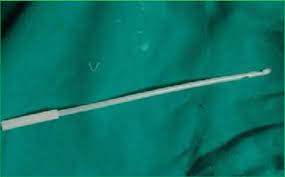A Comprehensive Guide to the Karman Cannula: Uses, Benefits, and Risks

The Karman Cannula, also known as the Karman curette or suction curette, is a medical instrument that plays a crucial role in various gynecological and obstetric procedures. In this comprehensive guide, we will delve into the uses, benefits, and potential risks associated with the Karman Cannula.
Understanding the Karman Cannula
The Karman Cannula is a slender, tube-like instrument that is commonly made of stainless steel or plastic. It is designed to be inserted into the uterine cavity through the cervix. The primary purpose of this instrument is to remove tissue from the uterine lining, making it an essential tool in various medical procedures, such as abortions, miscarriage management, and diagnostic dilation and curettage (D&C).
Uses of the Karman Cannula
- Abortion Procedures
The Karman Cannula is most notably used in abortion procedures. During a vacuum aspiration abortion, the cannula is connected to a suction device, and the healthcare provider carefully inserts it into the uterus to remove the pregnancy tissue. This is a safer and less invasive alternative to surgical abortion methods, and it is often performed in the early stages of pregnancy.
- Miscarriage Management
In cases of incomplete miscarriage or missed abortion, the Karman Cannula is employed to remove the remaining fetal tissue from the uterus. This not only prevents potential complications but also provides emotional relief to the patient.
- Diagnostic Dilation and Curettage (D&C)
The Karman Cannula is also used in diagnostic D&C procedures. In this scenario, it helps in the removal of tissue samples from the uterine lining for further examination. This is essential in the diagnosis of various gynecological conditions, such as abnormal uterine bleeding, endometrial hyperplasia, or suspected uterine cancer.
Benefits of the Karman Cannula
- Safety
The Karman Cannula is considered a safer alternative to surgical abortion methods like dilation and curettage. It is associated with fewer complications and less trauma to the cervix and uterus, resulting in quicker recovery times for patients.
- Efficiency
The instrument is highly efficient in removing pregnancy tissue or conducting D&C procedures. Its slim design allows for precise access to the uterine cavity, minimizing the risk of injury or perforation.
- Minimized Pain and Discomfort
Patients often experience less pain and discomfort during and after procedures that involve the Karman Cannula compared to more invasive methods. This can make the experience more tolerable for patients.
- Versatility
The Karman Cannula is versatile and can be used in a variety of gynecological and obstetric procedures. Its adaptability makes it a valuable tool for healthcare providers in different clinical settings.
- Lower Cost
Compared to surgical methods, procedures involving the Karman Cannula are generally more cost-effective. This can be a significant benefit for patients who are concerned about the financial aspects of their healthcare.
Risks and Considerations
While the Karman Cannula has numerous benefits, it’s essential to be aware of potential risks and considerations associated with its use.
- Infection
As with any medical procedure that involves the introduction of instruments into the body, there is a risk of infection. Providers must adhere to strict aseptic techniques and maintain sterile conditions to minimize this risk.
- Bleeding and Injury
In rare cases, the Karman Cannula may cause bleeding or injury to the cervix or uterine wall. Healthcare providers should be well-trained in the proper technique to reduce the chances of these complications.
- Emotional Impact
Abortion and miscarriage management can be emotionally challenging for patients. Healthcare providers should offer support and counseling to help patients cope with the emotional aspects of these procedures.
- Legal and Ethical Considerations
The use of the Karman Cannula, especially in abortion procedures, may have legal and ethical implications that vary from one jurisdiction to another. Healthcare providers must be aware of and comply with local regulations and ethical guidelines.
Conclusion:
The Karman Cannula is a valuable instrument in gynecological and obstetric care, offering numerous benefits in terms of safety, efficiency, and cost-effectiveness. It plays a critical role in abortion procedures, miscarriage management, and diagnostic D&C. However, like any medical procedure, there are potential risks and considerations that healthcare providers and patients should be aware of. Ensuring proper training and adherence to best practices can help maximize the benefits of this versatile instrument while minimizing potential risks. Overall, the Karman Cannula is an indispensable tool in the field of women’s healthcare, providing safe and effective solutions for various medical needs.
